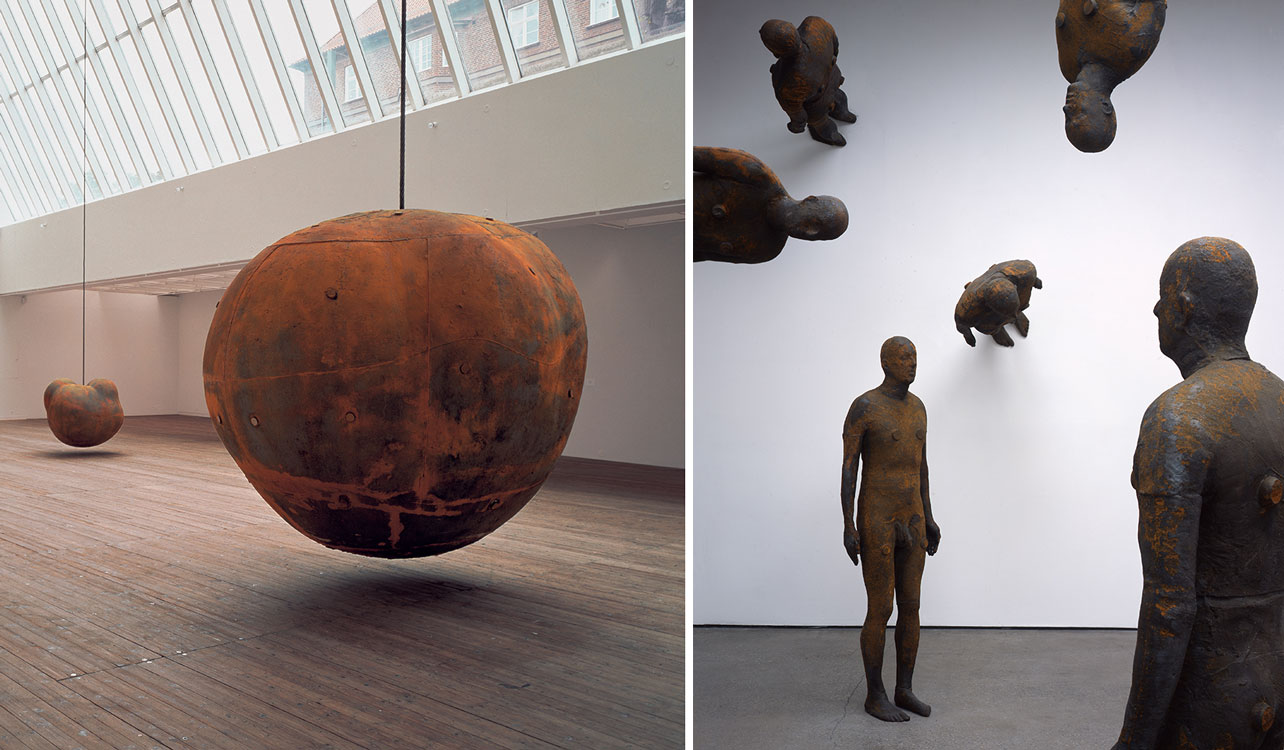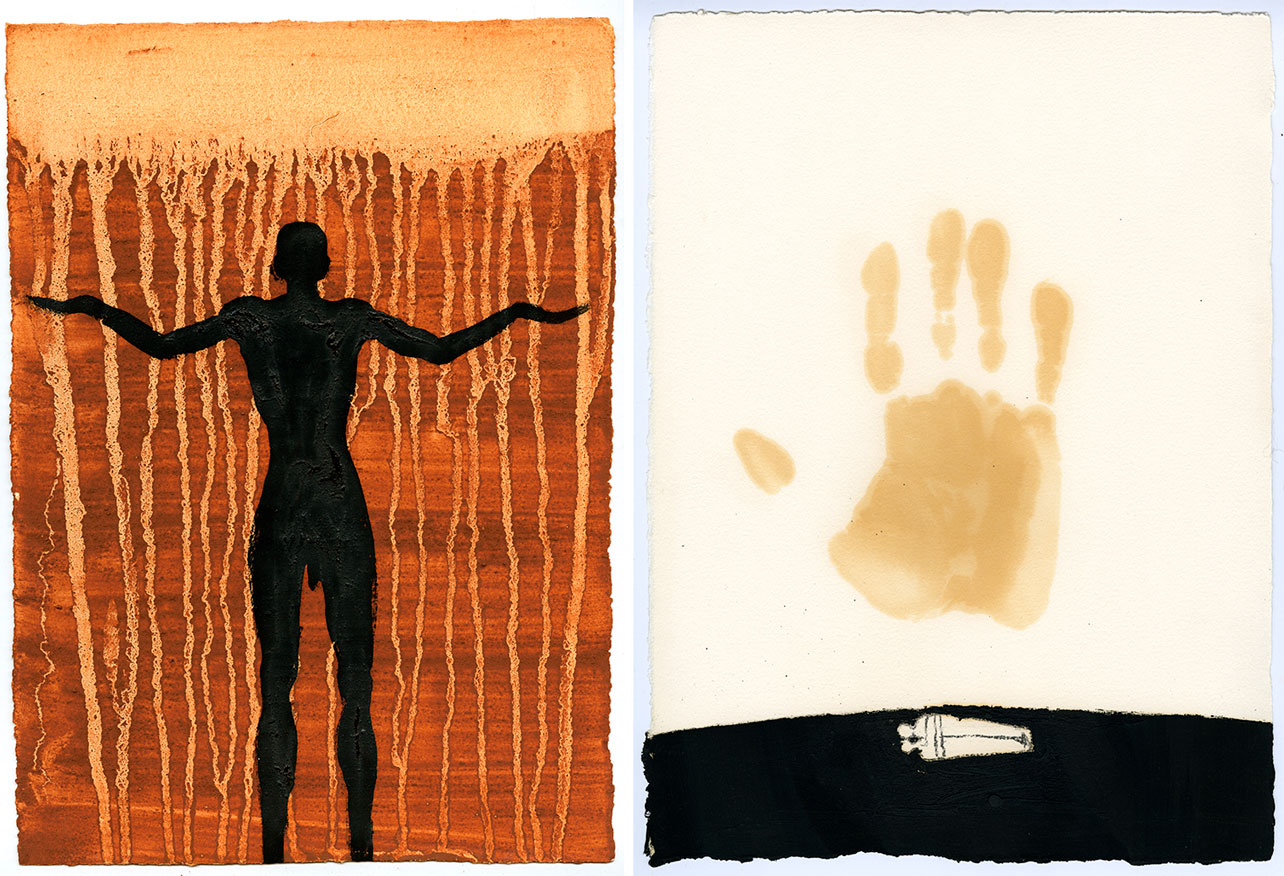ART-PRESENTETION: Antony Gormley
 Antony Gormley is widely acclaimed for his sculptures, installations and public artworks that investigate the relationship of the human body to space. His work has developed the potential opened up by sculpture since the 1960s through a critical engagement with both his own body and those of others in a way that confronts fundamental questions of where human beings stand in relation to nature and the cosmos. Gormley continually tries to identify the space of art as a place of becoming in which new behaviours, thoughts and feelings can arise.
Antony Gormley is widely acclaimed for his sculptures, installations and public artworks that investigate the relationship of the human body to space. His work has developed the potential opened up by sculpture since the 1960s through a critical engagement with both his own body and those of others in a way that confronts fundamental questions of where human beings stand in relation to nature and the cosmos. Gormley continually tries to identify the space of art as a place of becoming in which new behaviours, thoughts and feelings can arise.
By Efi Michalarou
Photo: Royal Academy of Arts Archive
From the British coastline to the rooftops of Manhattan, Antony Gormley’s sculptures are recognised across the world. With work from his 45-year career alongside major new installations created for his new solo exhibition at Royal Academy of Arts in London is one of his most ambitious exhibition in more than ten years. Gormley sees the exhibition as a “test site”; engaging the senses, employing scale, darkness and light, and using elemental, organic and industrial materials. The works interact with the BeauxArts galleries, creating a series of distinct encounters that will come together as a collective experience. It will be a summation of Gormley’s enduring concern with the inner dark space of the body itself and the body’s relation to its surroundings: the body as space and the body in space. Gormley said, “there is no subject until the viewer arrives and begins to engage”. The first work, “Iron Baby” (1999), is encountered in the Annenberg Courtyard. This life-size form of a new-born baby in cast iron will be tiny within the scale of the courtyard, suggesting human vulnerability but also the vigour of life. In the galleries, early, rarely-exhibited works from the late 1970s and early 1980s show the experimental origins of Gormley’s practice, with links to Land Art, Performance and Minimalism. Works featured include ”Land, Sea and Air” (1977-79) and “Fruits of the Earth” (1978-79) in which natural and man-made objects are wrapped in lead. This process of encasing objects in lead evolved into Gormley’s well-known ‘body case’ sculptures, from the 1980s onwards, which use the artist’s own body as a tool, material and subject. There are a series of concrete works from the 1990s including “Flesh” (1990). Each volume contains the body form as a void in a position that tests the enclosing mass. The interior is only visible through the hands, feet or head that break the surface of the block. The exhibition draws the visitor into a series of whole-room installations, some reconfigured especially for the RA’s galleries, and invite them to actively engage with their bodies as they navigate the space. “Lost Horizon I” (2008) features 24 cast iron figures set in different orientations on every wall, floor and ceiling, challenging the perception of which way is up. “Clearing VII” (2019) consists of kilometres of coiled, flexible aluminium tubing arcing from floor to ceiling and wall to wall; a drawing in space which encircles the visitor. “Matrix III” (2019) takes over the largest gallery: a cloud of intersecting rectangular dark steel mesh suspended above head height, each encasing a space equivalent to the average size of a European bedroom. For Gormley, it is “the ghost of the environment that we’ve all chosen to accept as our primary habitat” and a work that continues critical dialogue with perception, “by constructing an optical maze in which it is impossible to reconcile foreground, mid-ground and background”. The work “Host” (2019) fills an entire gallery to a depth of 23cm with a vast expanse of seawater and clay, evoking the depths from which life emerged, it offers a confrontation with elemental substance, an experience that changes as the hours of autumn daylight diminish. Since the work was conceived in 1997 it has only been exhibited three times and this is the first time it ise shown in the UK. At the centre of the exhibition in the Central Hall are two of Gormley’s early ‘expansion’ works; “Body” and “Fruit” (both1991-93). These imposing hollow pieces expand the form of the body to create objects that have the characteristics of both bomb and fruit. Each weighing several tonnes, the works will hover centimetres from the floor. Alongside sculpture, there is a rich selection of works on paper, many of them using unusual materials such as crude oil, earth and blood. For Gormley, drawing is a core, everyday activity that runs parallel to his sculpture, exploring the same concerns through different means.
Info: Royal Academy of Arts, Burlington House, Piccadilly, London, Duration: 21/9-3/12/19, Days & Hours: Mon-Thu & Sat-Sun 10:00-18:00, Fri 10:00-22:00, www.royalacademy.org.uk






